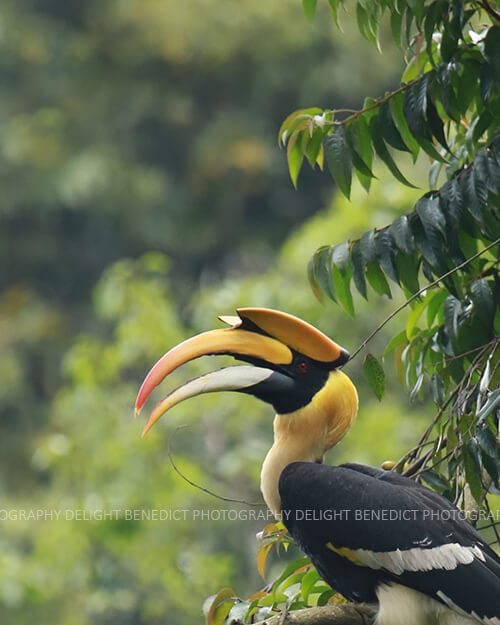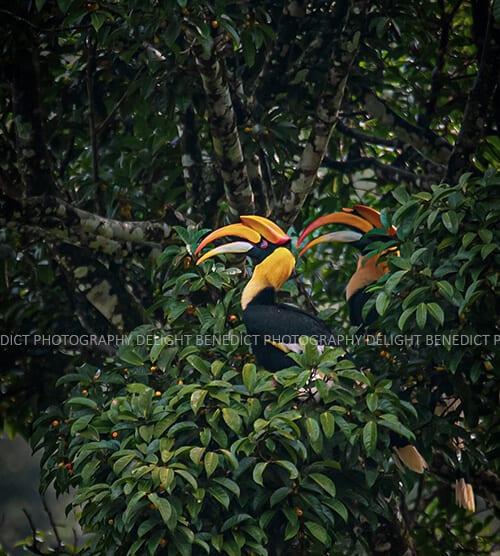Hornbills have delighted the human race for ages, especially indigenous forest communities from around the world. Even getting a glimpse of a Hornbill is a great experience filled with joy and excitement. There are various hornbill species with many myths. The Senufo people from the Ivory Coast believes that the hornbill was one of five original beings that helped to create humanity by roaming the earth. In Papua New Guinea, they are considered carriers of the soul to the afterlife. And the Dayak and Iban people of Indonesia consider the hornbill a symbol of manhood and a messenger of the spirits.

Hornbills play a significant role in local folklore in India too. Consuming the flesh of the Hornbill was once considered a cure for fatal diseases. And the hunters of Nyishi tribes of Arunachal Pradesh believed that mounting the hornbill beak on their headgear gave them strength. Thankfully, this is all history now. The tribes that once hunted the hornbills are today working towards the conservation of the species.
The Great Indian Hornbill
In India, the hornbill can be sighted in the Nilgiri mountains of Tamil Nadu, in the jungles of the Western Ghats, and in Northeast India reserved forests. The Great Indian Hornbill is the state bird of Arunachal Pradesh and Kerala. The exact reason why it is selected as the state bird is not known.
Indian hornbills actively hunt and eat snakes, lizards, insects, and even nestling birds. Apart from that, they are mainly fruit eaters too. They like to eat various types of berries and swallow most of their food fully instead of breaking it down first. After the consumption of food, they’ll vomit what they cannot digest such as pits and bones.
Places to spot Hornbills in India
The best place to see hornbills in Northeast India is Pakke Tiger Reserve of Arunachal Pradesh. Along the Western Ghats, Mollem National Park in Goa, Nelliampathi in Kerala, Anamalai Tiger Reserve in Tamil Nadu, and Nagarhole National Park in Karnataka are all promising sites to spot Hornbills.

